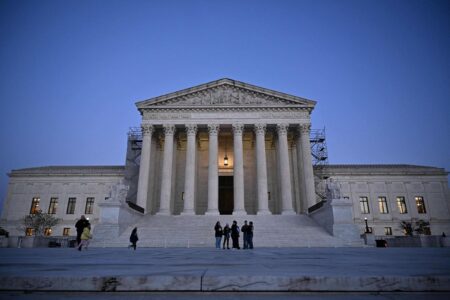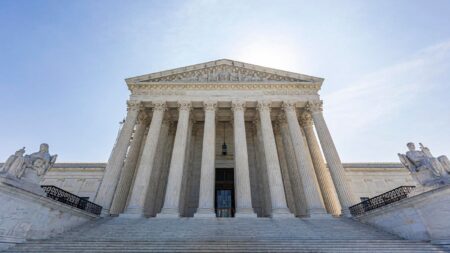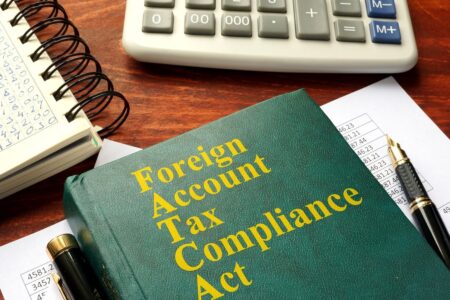Weeks after the IRS announced a moratorium on processing new Employee Retention Credit (ERC) claims, the IRS has issued more guidance on the program. Specifically, the IRS has issued an opinion about whether an employer can rely on communications from the Occupational Safety and Health Administration (OSHA) to determine whether they qualify as an “eligible employer” for purposes of the credit.
ERC
Here’s how the ERC works. Eligible employers are those that paid qualified wages to some or all employees after March 12, 2020, and before Jan. 1, 2022. Typically, to qualify, you must demonstrate that your business was shut down by a government order due to the pandemic during 2020 or the first three calendar quarters of 2021, or that you experienced a specific decline in gross receipts during the eligibility periods during 2020 or the first three calendar quarters of 2021. Some businesses may also qualify as recovery startup businesses for the third or fourth quarters of 2021 (otherwise, the ERC relief was phased out by Congress for businesses for that period).
The credit is 50% of up to $10,000 in wages, meaning that it can be as high as $5,000 per employee in 2020 and as high as $21,000 per employee in 2021 (totaling the $26,000 per employee that is regularly touted).
The ERC is available to most kinds of businesses, including tax-exempt businesses. It is not available to individuals, including freelancers and independent contractors.
Eligible Employer Elements
Two essential elements need to be met to be considered an eligible employer due to a suspension of operations:
- An employer must be subject to orders from an appropriate governmental authority limiting commerce, travel, or group meetings due to Covid-19; and
- Such orders must result in a full or partial suspension of an employer’s trade or business operations.
According to IRS Notice 2021-20, which was issued during the pandemic, legal analysis, orders, proclamations, or decrees from the federal government or any state or local government may be taken into account by an employer as “orders from an appropriate governmental authority” only if they limit “commerce, travel, or group meetings” due to Covid-19 and relate to the suspension of an employer’s operation of its trade or business. Orders that are not from the federal government must be from a state or local government that has jurisdiction over the employer’s operations. However, if an employer’s workplace is closed by a governmental order, but the employer can continue operations comparable to its operations before the closure (including teleworking), the employer’s operations are not considered to have been fully or partially suspended.
Importantly, statements from a governmental official do not rise to the level of a governmental order for purposes of the ERC.
Occupational Safety and Health Act
The Occupational Safety and Health Act (OSH Act) was passed in 1970 and gives OSHA authority to establish and enforce workplace safety and health standards.
During Covid-19, OSHA published a series of communications on its website about the pandemic. The communications included nonbinding guidance for employers and employees. Part of that guidance pointed employers to advice from the Centers for Disease Control and Prevention (CDC) to assess potential workplace hazards as a result of Covid-19. OSHA also recommended controls to mitigate risks—those actions included physical distancing, maintaining ventilation systems, and properly using face coverings or PPE.
A disclaimer on the OSHA website noted, “OSHA requirements are set by statute, standards and regulations,” and interpretations (including those contained in the OSHA memo) “cannot create additional employer obligations.”
Legal Analysis
According to the IRS, some taxpayers have argued that their businesses were fully or partially suspended for purposes of the ERC because OSHA communications constituted an “order.”
The IRS, however, found that OSHA communications do not command or mandate any employer to take any specific action, leaving it outside the ordinary meaning of the term “orders.” In a memo, the IRS noted that “OSHA provided recommendations throughout 2020 and 2021 on how employers could make their workplaces safer for employees and how to comply with pre-existing standards.” However, neither the CARES Act nor section 3134 of the tax code mention recommendations, guidelines, or other informal standards. That means, writes the IRS, that those communications do not fall within the meaning of the term “orders” and cannot be used to claim the ERC, even if employers took steps in response to the communications.
The IRS also posited that even if you assumed that the OSHA guidance constituted “orders” for purposes of the ERC, an employer must still demonstrate how those impacted business. While noting that it was facts and circumstances dependent, the IRS suggested that the OSHA recommendations—like wearing a mask and gloves while performing their duties—would not likely impact an employer’s ability to operate their business. The employer would still have to substantiate that the modifications resulted in a partial or complete shutdown.
Scenarios
The memo included two scenarios for illustration.
Scenario 1 Facts: Employer A is in a state and a local jurisdiction that lifted all Covid-19-related health orders and restrictions in the first calendar quarter of 2021. At that time, Employer A ceased mitigation measures other than encouraging employees to wear masks and practice routine hygienic practices such as frequent handwashing. Employer A claimed the ERC in the second and third calendar quarters of 2021, citing that business operations were partially suspended as a result of the communications from OSHA.
Scenario 1 Findings: The IRS found that Employer A was not subject to any governmental order, and that OSHA communications did not constitute an “order.” Additionally, Employer A could not demonstrate that encouraging employees to wear masks and practice routine hygienic practices such as frequent handwashing had more than a nominal effect on its business operations. As a result, it does not meet the definition of eligible employer for purposes of the ERC.
Scenario 2 Facts: Same facts as Scenario 1, except that before 2020, Employer A’s employees teleworked two to three times a week. In March 2020, Employer A allowed its employees to telework or work remotely full-time and continued this policy through the end of the third calendar quarter of 2021.
Scenario 2 Findings: The IRS concluded that Employer A could continue operations comparable to operations before any closure. Employer A’s employees teleworked at least part of the time, indicating that Employer A’s employees were already equipped to work from a location other than Employer A’s offices without a disruption to Employer A’s operations. In addition, Employer A continued to allow employees to telework in the second and third calendar quarters of 2021 despite there being no restrictions, which suggests the employees’ absence from the physical workspace did not disrupt operations. Finally, since OSHA does not conduct inspections of home offices, any orders from OSHA would not apply to the home offices of Employer A’s employees. Employer A cannot substantiate that a governmental order fully or partially suspended its business operations.
GLAM
This information was published as a GLAM. A GLAM, or Generic Legal Advice Memorandum, is legal advice issued to IRS employees on certain matters, such as industry-wide issues. It’s considered informal guidance that is not binding on the IRS or taxpayers. As noted in the GLAM, it cannot be used or cited as precedent. Its value to taxpayers and tax practitioners is that it offers a window into how the IRS views certain matters, especially those that might be in dispute.
The GLAM, dated Oct. 18, 2023, was officially released on Nov. 3, 2023.
Read the full article here









